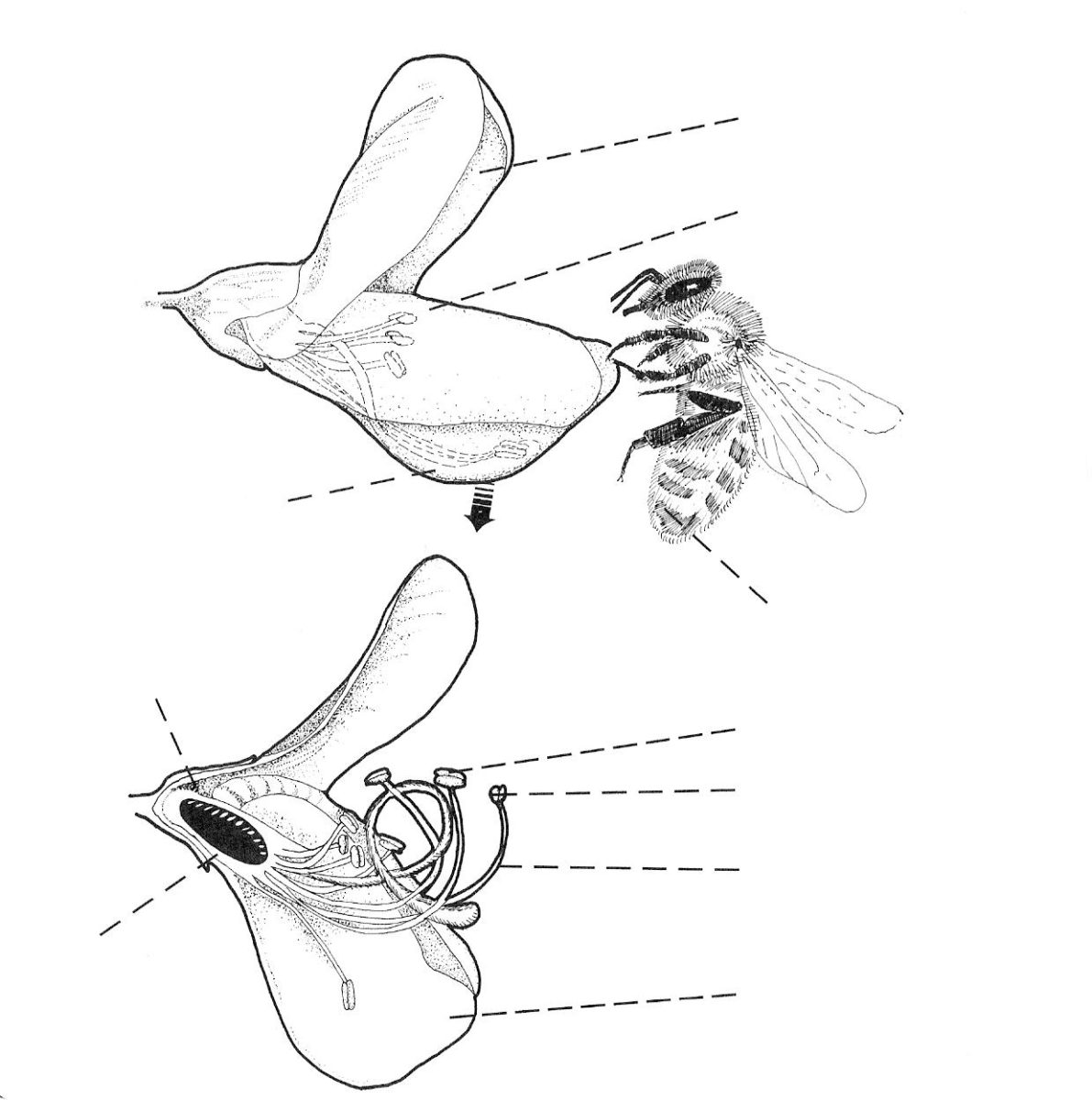There are many species of bees. They come in various sizes with various tongue lengths. All bees are attracted to similar colors and aromas of flowers. Some flowers have long and narrow corollas, and the nectar can only be reached by a very long-tongued bee such as a bumble bee. For example, the nectar in red clover blossoms is readily accessible to bumble bees but not to other bees with shorter tongues.
Smaller bees, such as honey bees and leafcutter bees, may be allured by the smell of red clover but may have a hard time reaching the nectar and pollen with their tongues. So, they will switch foraging preference to dutch or sweet clover, with more open petals and easier-to-reach rewards.
Similarly, the flowers of blueberry plants also have a long corolla that proves difficult for a honey bee. A smaller bee may be able to sneak the whole body inside the flower and enjoy the pollen and nectar at the base of the tubular corolla. A bumble bee can reach the rewards with her long tongue from outside the flower. But this floral shape is difficult for honey bees to visit effectively.

Other flowers, particularly in the family Solenaceae, which includes tomatoes, eggplants, and peppers, do not release pollen from the anther unless the anther is sonicated, or vibrated very quickly. Bumble bees specialize in sonicating, or buzz pollination, of tomato flowers. They grab the flower in their mandibles and vibrate their flight muscles, releasing the pollen. Honey bees, leafcutter bees, and mason bees are not able to buzz-pollinate so you will rarely, if ever, see these bees on tomatoes.
Alfalfa is another interesting example of an unusual flower. Alfalfa flowers resemble other legumes with one large upper petal, two side petals, and two fused bottom keel petals. Those two keel petals hold an unusual surprise however. Together they hold the stamen under tension. When a probing insect steps on those petals, the stamen is released, and it springs forward slamming into the upper petal (Figure 4.11). This process insures that a visiting bee is dusted with pollen. Some bees, including honey bees, dislike being wacked on the head repeatedly and learn to avoid alfalfa flowers when easier forage sources are nearby.
One final point is that bee pollinators are often extremely loyal to their host plants during the bloom period. A bee, for example, will often fly from the same species flower to another in succession, ignoring other blooming plants along the way. This loyalty ensures the plant will be pollinated. On another day or at another time, a bee may switch her preference to another species of flower, but again will stay loyal to that flower over multiple visits.
